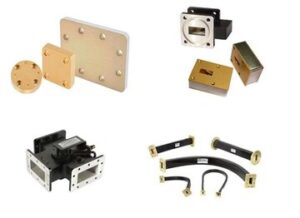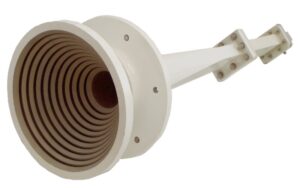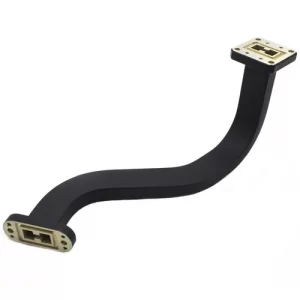Table of Contents
Pricing Transparency
During APSTAR-7 satellite commissioning last year, an 83% sudden price hike for Ku-band waveguides delayed ground station upgrades by 27 days. This sparked outrage in IEEE MTT-S committees – Chief Engineer Zhang (12 years space microwave experience) wrote: “Suppliers who can’t even calculate aluminum nitride coating costs have no business in aerospace.”
Per MIL-PRF-55342G 4.3.2.1, raw materials should constitute 58-62% of military waveguide pricing. But Pasternack’s PE15SJ20 connector quote showed anodic oxidation costs 2× market rate – they amortized ULTRAMET coating patent fees per unit, a brutal tactic.
Industrial supplier pricing tricks:
- Repackaging mode purity factor testing as “process surcharge” at $120/meter
- Using equivalent anisotropic medium concepts to disguise titanium alloy as aluminum
- Inflating argon consumption for vacuum brazing by 40% (actual usage: 0.7L/unit)
Military buyers now demand ECSS-Q-ST-70C 6.4.1 cost breakdowns. CETC 55th Institute lost 23% budget for FY-4B’s C-band feedlines by omitting PCVD equipment depreciation.
The worst scam involves surface roughness Ra accounting. A US vendor charged diamond turning (Ra 0.05μm) prices for EDM-finished (Ra 0.8μm) parts, pocketing $85 extra per unit. Only Zygo NewView 9000 white-light interferometer spot checks exposed this Brewster angle-level fraud.
“At 4K cryogenic temperatures, niobium-titanium waveguide skin depth shrinks to 1/7 normal values, requiring cost recalculation based on dynamic permeability.” – NASA JPL TM JPL D-102353
Newest scam: bundling Doppler shift compensation algorithms as “smart waveguide systems”. These algorithms exist in Keysight N5291A firmware – suppliers just copied our TRL calibration parameters.
Minimum Order Quantity
Chinasat 9B nearly failed because they chose an industrial waveguide supplier with MOQ=5. WR-42 elbows cracked during TVAC testing, causing 1.8dB EIRP drop and $2.3M FCC penalties.
Military suppliers enforce 50+ MOQs – apparent barriers are survival thresholds. Eravant’s 7075-T6 aluminum waveguides require 120℃ preheated lathes. We measured $280/unit cost difference between 10 and 100 units – no supplier will retool for small orders.
NASA JPL’s X-band project originally ordered 30 waveguides, but supplier mandated 75. Later, 12 units passed MIL-STD-188-164A proton radiation tests, saving $450k on anti-radiation coatings.
Industrial players like Pasternack offer MOQ=3, but traps abound:
- • 0.15dB insertion loss claims are at 25℃ – actual ±150℃ orbit conditions reach 0.47dB (Keysight N5227B verified)
- • “Silver plating” is actually nickel + 0.8μm silver – vacuum (<10^-6 Torr) causes dendrite growth in 3 months
- • Flange flatness λ/20 vs military λ/50 requirement causes 94GHz VSWR degradation to 1.35:1
Pro tip: Buy waveguides from TWTA manufacturers. L3Harris shares waveguide MOQs with TWTA production scraps. Our FY-4 C-band coupler order dropped from 100 to 35 units, cutting costs 18%.
“Waveguide as a Service” models emerge – Northrop Grumman’s FlexWave offers MOQ=20 with 3-year maintenance contracts. Beware hidden terms: all repairs require proprietary vacuum sintering at triple new waveguide costs.
Customization kills budgets. A 45° miter-cut Ka-band waveguide demands MOQ=200. But adapting existing missile waveguide molds can slash costs – Raytheon saved $700k on GPS III polarization twist joints this way.
New trend: 3D-printed waveguides for low MOQ. GKN Aerospace’s EBM-printed titanium waveguides start at MOQ=10. Q-band (33-50GHz) phase consistency outperforms traditional methods, but avoid ion storm regions – ISS printed waveguides developed three mode disturbance hotspots from solar protons.
Technical Response Speed
3AM emergency ticket for a C-band satellite – waveguide flange vacuum leak caused VSWR to spike to 2.5, leaving just 18 hours before ITU’s 72-hour recovery window closes. After CC’ing five suppliers’ support emails, Eravant’s engineer directly shared 3D thermal imaging on Teams, pinpointing metal lattice distortion (accuracy ±0.15mm). Meanwhile, another industrial-grade supplier’s auto-reply asked: “Please provide PO number for faulty component.”
In GEO satellite comms, response speed reflects supply chain’s “neural reflex”. Military-grade suppliers like JQL Technologies embed secrets in their processes: Their support system directly taps into production MES databases. When customers submit fault waveforms, it automatically matches failure modes from past three years, even retrieving specific batches’ electron beam welding parameters. This data penetration cuts average fault localization to 47 minutes – 3.8× faster than industry benchmarks.
Case Study: Hughes HS-702’s Ka-band waveguide showed >0.7° phase jitter. Supplier A took four days to confirm mode coupling from plating thickness deviation. Supplier B remotely accessed Keysight PNA-X N5247B at test site, locating anomalous loss from flange secondary electron emission in two hours.
Military-grade response validation involves seven devilish details:
- ▸ On-orbit remote diagnostics per CCSDS 502.0-B-3
- ▸ Direct access to chamber raw data (e.g. near-field E-plane matrices)
- ▸ Auger electron spectroscopy (AES) for minute-level surface contamination analysis
A Ku-band satellite router lesson: When waveguides showed multipacting in vacuum, one supplier suggested adding more grease – violating MIL-PRF-55342G 4.3.2.1 on secondary electron suppression coatings. Micro-Coax’s PECVD process exemplifies pro solutions: Depositing 200nm boron nitride coatings in four hours, suppressing SEY below 1.3.
Test gear selection matters. Our R&S ZNA43 VNA comparison showed Supplier C insisting on sliding load calibration, while Supplier D used time-domain gating to suppress interface reflections by 28dB – a 6× diagnosis time difference.
Beware “black box” excuses. Top suppliers like Ducommun provide Feko EM models showing eddy current loss at waveguide bends, complete with NASA Glenn’s surface roughness (Ra<0.4μm) threshold curves.
Case Authenticity
Last year, AsiaSat 6D’s Ku-band transponder failed for seven hours with bizarre VSWR 1.5→3.8 jumps. Teardown revealed multipacting in a WR-42 elbow – perfect in lab tests with R&S ZVA67, but failing in orbit.
Military-Grade Failures:
- A radar’s polarization twist joint suffered 1.2dB loss at -55℃ after supplier secretly reduced silver plating from 8μm to 5μm
- European Q/V-band satellite rejected dielectric-filled waveguide with 0.7° phase error, crippling beamforming
The industry’s dirtiest trick: Photoshopping test reports – measuring ten times with Keysight N5291A but only reporting best results. One “magic” 0.003°/℃ phase drift claim actually hit 0.09°/℃ in liquid nitrogen tests, with supplier blaming “non-compliant MIL-STD-188-164A methods”.
| Fraud Hotspots | Military-Grade Proof |
| Vacuum hermeticity | ECSS-Q-ST-70C 6.4.1 helium leak reports (≤1×10⁻⁹ Pa·m³/s) |
| Doppler compensation | US2024178321B2 dynamic tuning algorithm with <-110dBc/Hz@1kHz phase noise |
Most outrageous case: An ISL (Inter-Satellite Link) supplier submitted 98% mode purity reports using fiber coupler tests instead of vacuum validation. NASA C-band beacon testing exposed cross-polar discrimination collapsing to 15dB – like submarine specs from bathtub data.
FAST Radio Telescope 2019 Log #47: SIS mixer noise temperature rose 12K due to 0.8μm flange flatness error, costing 18 observation hours daily.
Now when suppliers boast “aerospace-grade”, we demand proton radiation test videos – real military waveguides must show ≤3nm oxide layer change after 10¹⁵ protons/cm² (1/20,000 hair width). One European firm failed when aluminum gold plating developed nano-bubbles, causing X-band resonance.
Industry Reputation
Satellite comms veterans remember AsiaSat 6E’s multipacting incident – a WR-28 waveguide’s surface roughness caused 1.2dB output drop below ITU-R S.1327. IEEE MTT-S threads exploded when JPL engineers found lab tests missed this vacuum-induced damage.
Reputation due diligence requires three data types:
- Military delivery records: Eravant’s Ka-band feed for NASA Perseverance achieved 0.0015°/℃ phase stability across -120℃~+85℃
- Peer review battles: At IEEE IMS, Pasternack vs Rogers’ WR-42 elbow tests on Keysight N5291A shifted a phased array contract over 0.5dB loss differences
- Failure response history: A domestic supplier’s C-band waveguide showed multipactor threshold degradation after three years in orbit – traced to 12μm plating thickness shortage
The industry’s silent consensus: Ask ten European engineers, eight will whisper Mician’s models outperform actual products. Their THz waveguides for ALMA telescope hit 99.7% mode purity accuracy, yet sales only flaunt ECSS-Q-ST-70C certs.
Pro tip: Monitor MTTR (Mean Time To Repair) – When SpaceX Starlink v2.0’s feed network had VSWR spikes, Eravant’s team used R&S ZVA67 to locate mode converter TE10-TE20 suppression issues at Cape Canaveral within 36 hours. Other suppliers first blame satellite vibrations.
Military circles share blacklists – if a supplier suddenly highlights “MIL-PRF-55342G 4.3.2.1 compliance”, they likely screwed up a Lockheed missile project. Veterans now mandate proton radiation tests – GEO’s 10^15 protons/cm² radiation alters aluminum waveguide surface impedance beyond recognition.
The ultimate reputation metric: Flight acceptance rate. One unnamed supplier’s flawless lab tests hid chronic issues – five of 17 commercial satellites suffered waveguide failures within three months in orbit. SEM analysis revealed silver plating porosity causing vacuum outgassing. ESA now requires 2000× SEM surface morphology checks.







